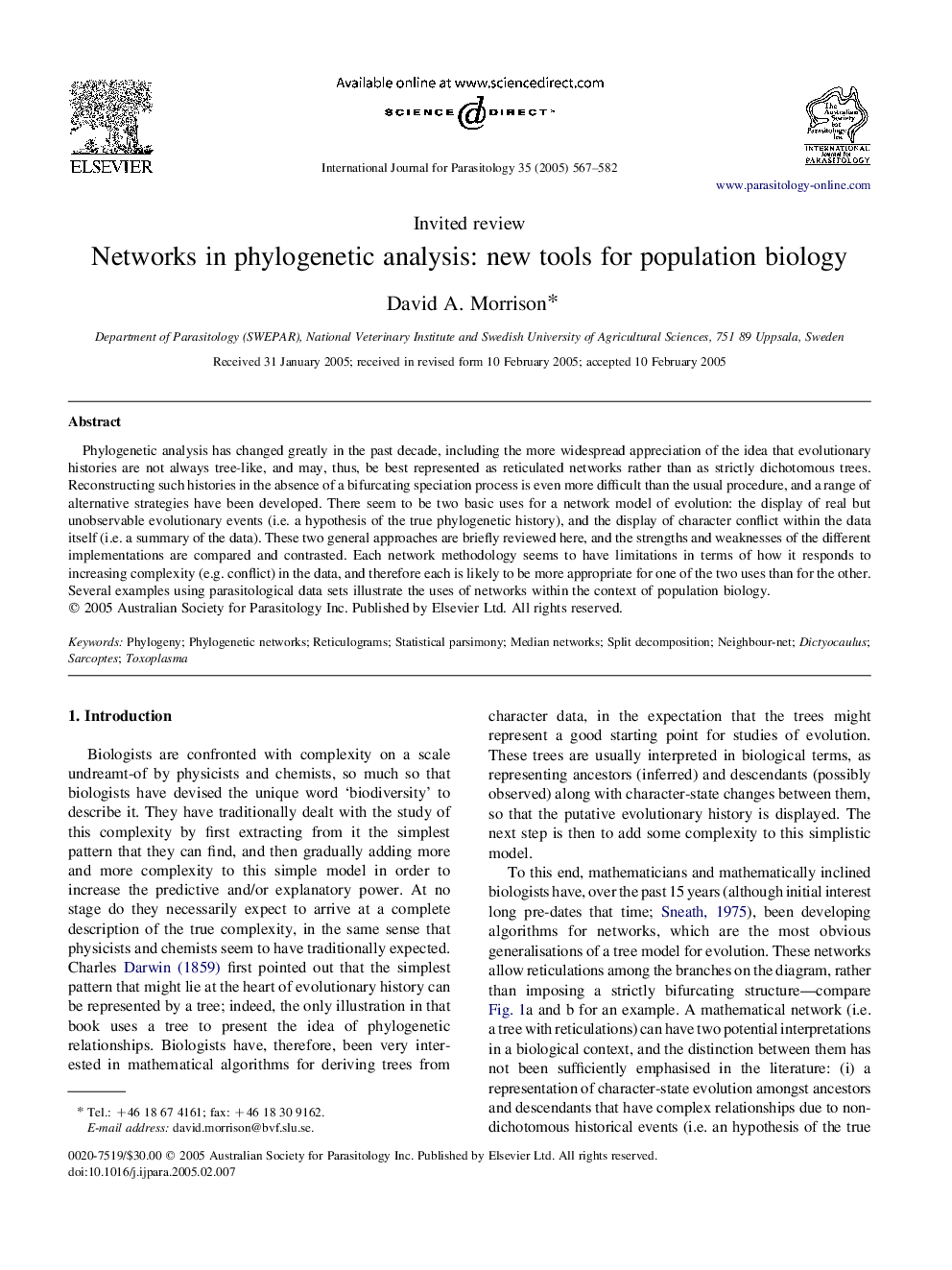| کد مقاله | کد نشریه | سال انتشار | مقاله انگلیسی | نسخه تمام متن |
|---|---|---|---|---|
| 8979715 | 1107342 | 2005 | 16 صفحه PDF | دانلود رایگان |
عنوان انگلیسی مقاله ISI
Networks in phylogenetic analysis: new tools for population biology
دانلود مقاله + سفارش ترجمه
دانلود مقاله ISI انگلیسی
رایگان برای ایرانیان
کلمات کلیدی
موضوعات مرتبط
علوم زیستی و بیوفناوری
ایمنی شناسی و میکروب شناسی
انگل شناسی
پیش نمایش صفحه اول مقاله

چکیده انگلیسی
Phylogenetic analysis has changed greatly in the past decade, including the more widespread appreciation of the idea that evolutionary histories are not always tree-like, and may, thus, be best represented as reticulated networks rather than as strictly dichotomous trees. Reconstructing such histories in the absence of a bifurcating speciation process is even more difficult than the usual procedure, and a range of alternative strategies have been developed. There seem to be two basic uses for a network model of evolution: the display of real but unobservable evolutionary events (i.e. a hypothesis of the true phylogenetic history), and the display of character conflict within the data itself (i.e. a summary of the data). These two general approaches are briefly reviewed here, and the strengths and weaknesses of the different implementations are compared and contrasted. Each network methodology seems to have limitations in terms of how it responds to increasing complexity (e.g. conflict) in the data, and therefore each is likely to be more appropriate for one of the two uses than for the other. Several examples using parasitological data sets illustrate the uses of networks within the context of population biology.
ناشر
Database: Elsevier - ScienceDirect (ساینس دایرکت)
Journal: International Journal for Parasitology - Volume 35, Issue 5, 30 April 2005, Pages 567-582
Journal: International Journal for Parasitology - Volume 35, Issue 5, 30 April 2005, Pages 567-582
نویسندگان
David A. Morrison,